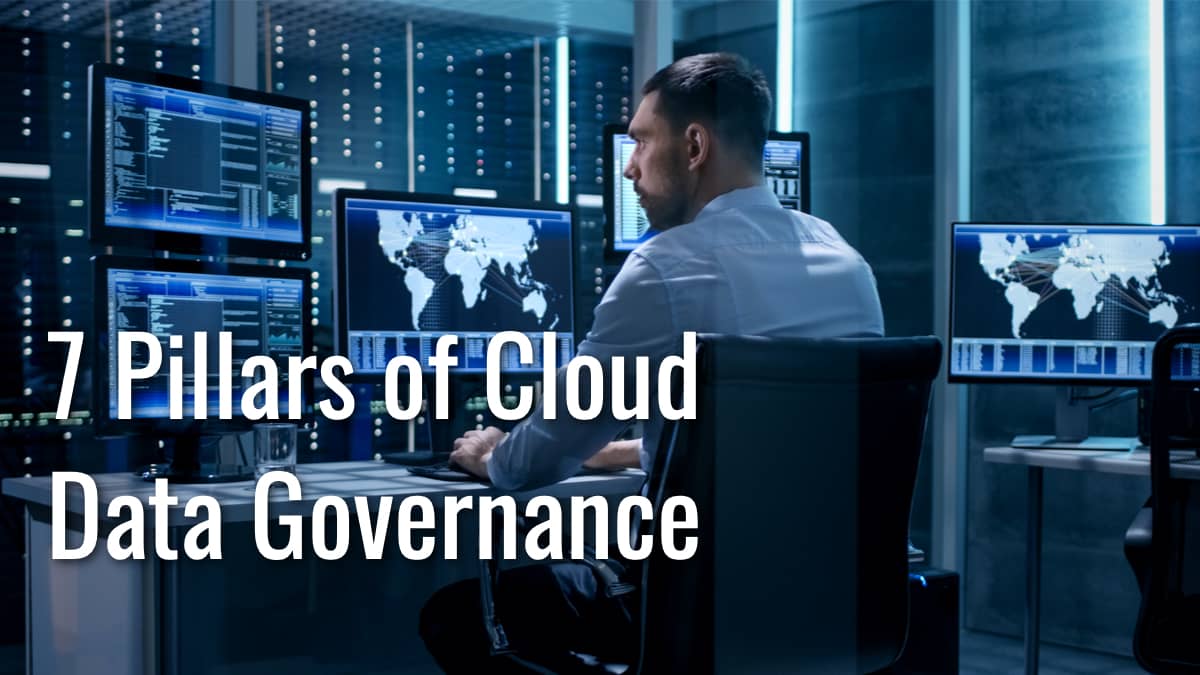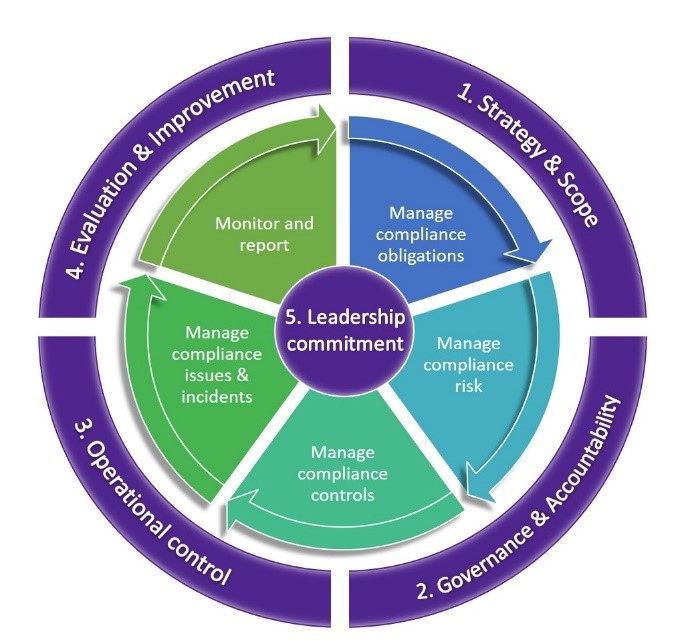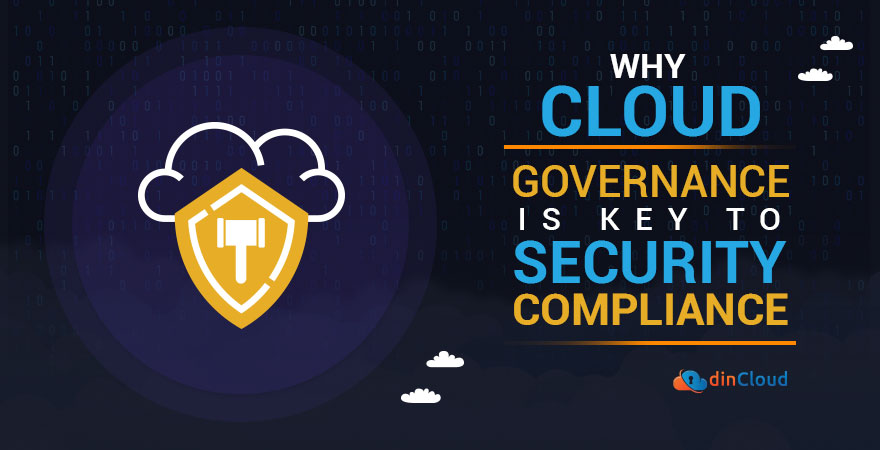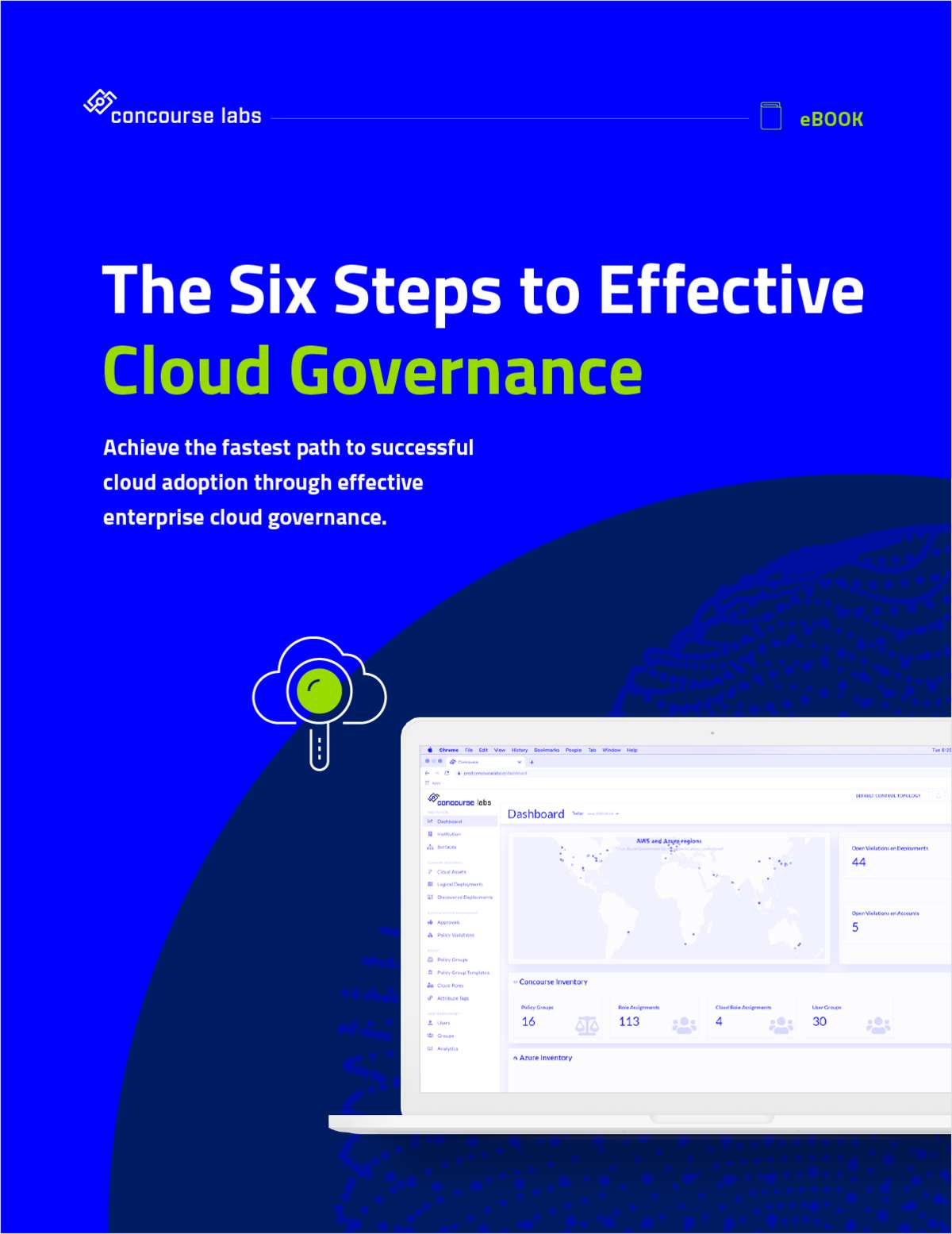The Significance of Cloud Governance and Compliance
Organizations are increasingly adopting cloud environments to leverage their scalability, flexibility, and cost-effectiveness. However, this shift also introduces new challenges related to governance and compliance. Implementing robust governance and compliance in cloud environments is crucial to address aspects like data security, regulatory compliance, and cost management. This article will explore the importance of these factors and provide guidelines for establishing a secure and compliant cloud infrastructure.
Cloud governance refers to the processes, policies, and controls that ensure the proper use and management of cloud resources. It encompasses various aspects, such as cost management, security, compliance, and operational efficiency. By establishing a solid cloud governance framework, organizations can mitigate risks, reduce costs, and improve overall performance.
Compliance in cloud environments is equally important, as businesses are often subject to industry-specific regulations and standards. Ensuring that cloud-based systems and applications adhere to these requirements is essential to avoid legal penalties, protect sensitive data, and maintain customer trust. Compliance efforts often involve risk assessments, policy development, and ongoing monitoring to identify and address potential vulnerabilities.
Cost management is another critical aspect of governance and compliance in cloud environments. While cloud services can offer significant cost savings compared to traditional on-premises infrastructure, they can also lead to unexpected expenses if not properly managed. Implementing cost optimization strategies, such as resource allocation, rightsizing, and automation, can help organizations maintain financial control and avoid overspending.
In conclusion, governance and compliance in cloud environments are essential for ensuring data security, regulatory compliance, and cost management. By understanding the significance of these factors and implementing appropriate strategies, organizations can leverage the benefits of cloud computing while minimizing potential risks and challenges.
Understanding Cloud Governance Models
As organizations increasingly adopt cloud environments, understanding the various governance models is crucial for ensuring proper management and compliance. This article will explore different cloud governance models, focusing on the shared responsibility model and its impact on governance and compliance in cloud environments.
Cloud governance models define the distribution of responsibilities between cloud service providers (CSPs) and their customers regarding management, security, and compliance. These models can vary depending on the CSP and the type of cloud service (Infrastructure as a Service, Platform as a Service, or Software as a Service).
The shared responsibility model is the most common governance model in cloud environments. In this model, the CSP is responsible for the security of the underlying cloud infrastructure, while the customer is responsible for securing their applications, data, and configurations built on top of the cloud infrastructure. This shared responsibility ensures a clear distribution of tasks and helps prevent potential gaps in security and compliance.
Understanding the shared responsibility model is essential for organizations to effectively manage their cloud environments and maintain compliance. CSPs typically provide a detailed description of their responsibilities in their service level agreements (SLAs) or security documentation. Customers should carefully review these documents to ensure they understand their obligations and implement appropriate controls and processes.
While the shared responsibility model provides a solid foundation for cloud governance, organizations should also consider additional governance models to address their specific needs. For instance, some CSPs offer a delegated administration model, allowing customers to delegate specific administrative tasks to the CSP or third-party service providers. This model can help organizations optimize their resources and improve operational efficiency.
In conclusion, understanding various cloud governance models, particularly the shared responsibility model, is vital for ensuring effective governance and compliance in cloud environments. By clearly defining responsibilities and implementing appropriate controls, organizations can mitigate risks, maintain compliance, and leverage the benefits of cloud computing.

Selecting the Right Cloud Service Provider
When adopting cloud services, organizations must carefully select a cloud service provider (CSP) that aligns with their governance and compliance needs. This article will discuss the role of CSPs in ensuring governance and compliance and provide guidelines for choosing a CSP that meets your organization’s requirements.
CSPs play a critical role in maintaining governance and compliance in cloud environments. They provide infrastructure, platforms, and software services while ensuring security, privacy, and regulatory compliance. CSPs also offer various tools and features to help customers manage their cloud resources, implement security controls, and monitor their environments for potential issues.
To select the right CSP, organizations should consider the following guidelines:
- Assess your organization’s needs: Identify your governance and compliance requirements, such as data security, privacy, and regulatory compliance. Consider the types of cloud services you need (IaaS, PaaS, or SaaS) and the specific features and tools required to meet your needs.
- Evaluate CSPs’ compliance certifications: CSPs often undergo third-party audits to obtain compliance certifications, such as SOC 1, SOC 2, ISO 27001, and HIPAA. Review these certifications to ensure the CSP meets your organization’s compliance requirements.
- Examine CSPs’ security controls: Assess the CSP’s security measures, including data encryption, access controls, and incident response capabilities. Ensure the CSP provides sufficient transparency into its security practices and allows customers to implement additional security controls as needed.
- Review CSPs’ service level agreements (SLAs): SLAs define the CSP’s commitments regarding service availability, performance, and support. Ensure the SLA meets your organization’s requirements and includes penalties for non-compliance.
- Consider CSPs’ data protection policies: Understand the CSP’s data protection policies, including data backup, recovery, and deletion. Ensure the CSP adheres to best practices for data protection and allows customers to manage their data according to their needs and compliance requirements.
In conclusion, selecting the right CSP is crucial for ensuring governance and compliance in cloud environments. By carefully assessing your organization’s needs, evaluating CSPs’ compliance certifications, security controls, SLAs, and data protection policies, you can choose a CSP that aligns with your organization’s goals and requirements.

Designing a Comprehensive Compliance Strategy
In cloud environments, implementing robust governance and compliance is crucial for ensuring data security, regulatory compliance, and cost management. A key aspect of achieving this is designing a comprehensive compliance strategy. This article outlines the essential components of a successful compliance strategy, including risk assessment, policy development, and ongoing monitoring.
Risk Assessment
The first step in creating a compliance strategy is conducting a thorough risk assessment. This process involves identifying potential threats and vulnerabilities in your cloud infrastructure and evaluating the likelihood and impact of each risk. By understanding the risks associated with your cloud environment, you can prioritize your compliance efforts and allocate resources more effectively.
Policy Development
Once you have identified the risks, the next step is to develop clear and concise policies that address these risks and align with your organization’s goals and regulatory requirements. Policies should cover various aspects of cloud governance and compliance, such as data security, access controls, and incident response. It is essential to involve all relevant stakeholders in the policy development process, including IT, legal, and business teams, to ensure that policies are practical, enforceable, and aligned with your organization’s needs.
Ongoing Monitoring
Compliance is not a one-time activity but an ongoing process. Organizations must continuously monitor their cloud environments to ensure that they remain compliant with relevant regulations and internal policies. Monitoring can involve various activities, such as tracking user activity, reviewing system logs, and conducting regular security audits. By implementing automated monitoring tools and processes, organizations can detect potential issues and vulnerabilities more efficiently and take corrective action before they escalate.
Training and Awareness
Training and awareness are critical components of a successful compliance strategy. Organizations must ensure that all users, including employees, contractors, and third-party vendors, are aware of the policies and procedures that govern the use of cloud services. Providing regular training and awareness programs can help users understand their roles and responsibilities in maintaining compliance and encourage a culture of security and compliance within the organization.
Incident Response
Despite best efforts, incidents can still occur. Organizations must have a well-defined incident response plan in place to address potential compliance issues and minimize the impact of any security breaches or data losses. The incident response plan should outline the steps to be taken in the event of a compliance issue, including identifying the issue, containing the damage, investigating the root cause, and implementing corrective action.
Continuous Improvement
Finally, organizations must adopt a continuous improvement approach to cloud governance and compliance. This approach involves regularly reviewing and updating policies, procedures, and controls to ensure that they remain effective and aligned with changing regulatory requirements and business needs. By adopting a culture of continuous improvement, organizations can stay ahead of emerging threats and maintain a secure and compliant cloud environment.

How to Implement Effective Cloud Governance
Implementing effective cloud governance is crucial for organizations that want to ensure data security, regulatory compliance, and cost management in their cloud environments. This article provides a step-by-step guide on implementing cloud governance, covering aspects like setting up a governance team, establishing policies, and enforcing controls.
Step 1: Set Up a Governance Team
The first step in implementing cloud governance is to set up a dedicated governance team responsible for overseeing the organization’s cloud strategy. The team should include representatives from various departments, including IT, legal, and business units. The team’s primary role is to develop and enforce policies, monitor compliance, and ensure that the organization’s cloud strategy aligns with its business objectives and regulatory requirements.
Step 2: Establish Policies
Once the governance team is in place, the next step is to establish clear and concise policies that address various aspects of cloud governance and compliance. Policies should cover areas like data security, access controls, incident response, and cost management. It is essential to involve all relevant stakeholders in the policy development process, including IT, legal, and business teams, to ensure that policies are practical, enforceable, and aligned with the organization’s needs.
Step 3: Implement Controls
After establishing policies, the next step is to implement controls that enforce these policies and ensure compliance. Controls can include various measures, such as access controls, data encryption, and security monitoring. It is essential to choose controls that are appropriate for the organization’s cloud environment and regulatory requirements. The governance team should regularly review and update controls to ensure that they remain effective and aligned with changing business needs and regulatory requirements.
Step 4: Monitor Compliance
Continuous monitoring is critical for maintaining compliance in cloud environments. Organizations should implement automated monitoring tools and processes that detect potential issues and vulnerabilities more efficiently. Monitoring can involve various activities, such as tracking user activity, reviewing system logs, and conducting regular security audits. By implementing automated monitoring tools and processes, organizations can detect potential issues and vulnerabilities more efficiently and take corrective action before they escalate.
Step 5: Enforce Accountability
Finally, organizations must enforce accountability to ensure that all users, including employees, contractors, and third-party vendors, comply with the organization’s cloud governance and compliance policies. Enforcing accountability can involve various measures, such as conducting regular training and awareness programs, implementing access controls, and implementing disciplinary measures for non-compliance. By enforcing accountability, organizations can ensure that all users understand their roles and responsibilities in maintaining cloud governance and compliance.
Conclusion
Implementing effective cloud governance is essential for organizations that want to ensure data security, regulatory compliance, and cost management in their cloud environments. By following these five steps, organizations can establish a robust cloud governance framework that aligns with their business objectives and regulatory requirements. Remember that cloud governance is an ongoing process, and organizations must continuously review and update their governance framework to ensure that it remains effective and aligned with changing business needs and regulatory requirements.

Leveraging Automation for Compliance and Governance in Cloud Environments
Automation tools play a critical role in maintaining governance and compliance in cloud environments. By automating various aspects of cloud management, organizations can ensure consistent application of policies, reduce the risk of human error, and improve overall security and compliance posture. This article reviews some popular automation solutions and explains how they can help organizations achieve their governance and compliance objectives.
AWS Config
AWS Config is a fully-managed service that provides organizations with a detailed inventory of their AWS resources and their current configuration status. With AWS Config, organizations can monitor changes to their AWS resources, track compliance with various regulatory frameworks, and audit their resource configurations for potential security risks. AWS Config also provides automated remediation capabilities, enabling organizations to automatically correct non-compliant resource configurations and improve overall security and compliance.
Azure Policy
Azure Policy is a cloud governance solution that enables organizations to define and enforce policies across their Azure resources. With Azure Policy, organizations can ensure consistent application of policies across their Azure environment, prevent the creation of non-compliant resources, and audit their resources for potential security risks. Azure Policy also provides automated remediation capabilities, enabling organizations to automatically correct non-compliant resource configurations and improve overall security and compliance.
Google Cloud Policy
Google Cloud Policy is a cloud governance solution that enables organizations to define and enforce policies across their Google Cloud resources. With Google Cloud Policy, organizations can ensure consistent application of policies across their Google Cloud environment, prevent the creation of non-compliant resources, and audit their resources for potential security risks. Google Cloud Policy also provides automated remediation capabilities, enabling organizations to automatically correct non-compliant resource configurations and improve overall security and compliance.
Benefits of Automation for Governance and Compliance
Automation tools offer several benefits for organizations seeking to maintain governance and compliance in cloud environments. These benefits include:
- Consistent application of policies: Automation tools enable organizations to ensure consistent application of policies across their cloud environment, reducing the risk of human error and improving overall security and compliance.
- Improved visibility: Automation tools provide organizations with detailed visibility into their cloud resources and their current configuration status, enabling them to identify potential security risks and compliance issues more efficiently.
- Automated remediation: Automation tools provide automated remediation capabilities, enabling organizations to automatically correct non-compliant resource configurations and improve overall security and compliance.
- Reduced costs: Automation tools can help organizations reduce costs by reducing the need for manual intervention and improving overall efficiency.
Conclusion
Automation tools are essential for organizations seeking to maintain governance and compliance in cloud environments. By automating various aspects of cloud management, organizations can ensure consistent application of policies, reduce the risk of human error, and improve overall security and compliance posture. Popular automation solutions include AWS Config, Azure Policy, and Google Cloud Policy, each of which offers unique features and capabilities to help organizations achieve their governance and compliance objectives.

Monitoring and Auditing Cloud Environments: Ensuring Governance and Compliance in Cloud Environments
Cloud environments offer numerous benefits for organizations, including scalability, flexibility, and cost savings. However, these benefits come with unique challenges related to governance and compliance. One critical aspect of maintaining governance and compliance in cloud environments is continuous monitoring and auditing. In this article, we discuss the importance of monitoring and auditing cloud environments and provide best practices for staying on top of potential issues and vulnerabilities.
Why Monitoring and Auditing are Critical for Governance and Compliance in Cloud Environments
Monitoring and auditing are essential for ensuring governance and compliance in cloud environments. By continuously monitoring cloud resources, organizations can identify potential security risks, detect anomalous behavior, and ensure compliance with various regulatory frameworks. Auditing, on the other hand, enables organizations to review their cloud resources and configurations, identify potential issues, and take corrective action as needed.
Best Practices for Monitoring and Auditing Cloud Environments
To ensure effective monitoring and auditing of cloud environments, organizations should follow these best practices:
- Define clear policies and procedures: Organizations should define clear policies and procedures for monitoring and auditing cloud environments. These policies should outline the frequency and scope of monitoring and auditing activities, as well as the roles and responsibilities of various stakeholders.
- Implement automated monitoring and auditing tools: Automated monitoring and auditing tools can help organizations detect potential security risks and compliance issues more efficiently. Popular solutions for monitoring and auditing cloud environments include AWS CloudTrail, Azure Monitor, and Google Cloud Audit Logs.
- Configure alerts and notifications: Organizations should configure alerts and notifications to ensure that they are promptly notified of potential security risks and compliance issues. Alerts and notifications should be tailored to the specific needs of the organization and should be reviewed and updated regularly.
- Review logs and audit trails regularly: Organizations should review logs and audit trails regularly to identify potential security risks and compliance issues. Logs and audit trails should be reviewed in a timely manner, and any issues should be addressed promptly.
- Conduct regular security assessments: Organizations should conduct regular security assessments to identify potential vulnerabilities and take corrective action as needed. Security assessments should be conducted by qualified personnel and should be tailored to the specific needs of the organization.
Conclusion
Monitoring and auditing are critical for ensuring governance and compliance in cloud environments. By following best practices for monitoring and auditing cloud environments, organizations can detect potential security risks and compliance issues more efficiently, reduce the risk of data breaches and other security incidents, and maintain compliance with various regulatory frameworks. Popular solutions for monitoring and auditing cloud environments include AWS CloudTrail, Azure Monitor, and Google Cloud Audit Logs, which can help organizations automate various aspects of monitoring and auditing and improve overall efficiency and effectiveness.
Case Study: Successful Cloud Governance and Compliance Implementations
Implementing robust governance and compliance in cloud environments is a critical priority for organizations of all sizes and industries. By establishing effective governance and compliance frameworks, organizations can ensure the security and integrity of their cloud-based data and applications, maintain regulatory compliance, and optimize cost management. In this article, we will explore real-world examples of organizations that have successfully implemented cloud governance and compliance, highlighting the challenges they faced and the benefits they achieved.
Case Study 1: Healthcare Provider Implements Cloud Governance and Compliance
A large healthcare provider sought to migrate its electronic health records (EHR) system to a cloud-based platform. To ensure the security and integrity of patient data, the organization needed to implement robust governance and compliance frameworks. The organization selected a cloud service provider (CSP) that offered a range of security features, including encryption, access controls, and activity monitoring. The CSP also provided compliance reporting tools that enabled the organization to demonstrate compliance with regulatory frameworks such as HIPAA and HITECH.
To implement cloud governance and compliance, the organization established a governance team responsible for overseeing the migration and ongoing management of the EHR system. The team developed policies and procedures for data security, access controls, and compliance reporting. The team also established a regular review process to ensure that the organization remained in compliance with regulatory frameworks and best practices for cloud security.
Through the implementation of cloud governance and compliance, the healthcare provider was able to ensure the security and integrity of patient data, maintain regulatory compliance, and optimize cost management. The organization was also able to improve the availability and scalability of its EHR system, enabling it to better serve its patients and providers.
Case Study 2: Financial Services Firm Adopts Cloud Governance and Compliance
A financial services firm sought to migrate its financial applications to a cloud-based platform. To ensure the security and integrity of financial data, the organization needed to implement robust governance and compliance frameworks. The organization selected a CSP that offered a range of security features, including encryption, access controls, and activity monitoring. The CSP also provided compliance reporting tools that enabled the organization to demonstrate compliance with regulatory frameworks such as PCI-DSS and SOC 2.
To implement cloud governance and compliance, the organization established a governance team responsible for overseeing the migration and ongoing management of the financial applications. The team developed policies and procedures for data security, access controls, and compliance reporting. The team also established a regular review process to ensure that the organization remained in compliance with regulatory frameworks and best practices for cloud security.
Through the implementation of cloud governance and compliance, the financial services firm was able to ensure the security and integrity of financial data, maintain regulatory compliance, and optimize cost management. The organization was also able to improve the availability and scalability of its financial applications, enabling it to better serve its clients and stakeholders.
Conclusion
Implementing robust governance and compliance in cloud environments is a critical priority for organizations seeking to ensure the security and integrity of their cloud-based data and applications, maintain regulatory compliance, and optimize cost management. By establishing effective governance and compliance frameworks, organizations can reap the benefits of cloud computing while mitigating the risks associated with cloud-based data and applications. Real-world examples of organizations that have successfully implemented cloud governance and compliance demonstrate the challenges and benefits associated with implementing cloud governance and compliance.

